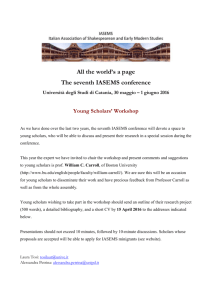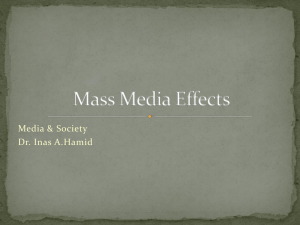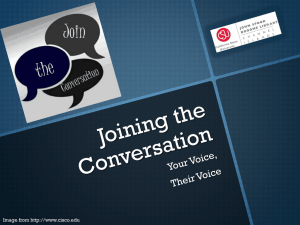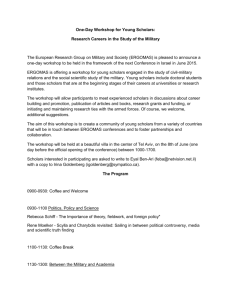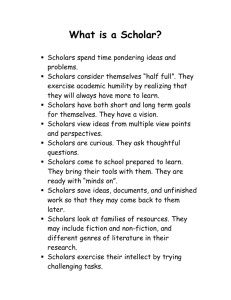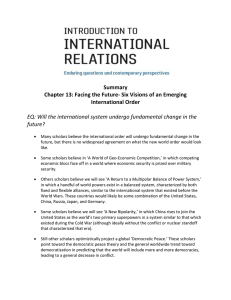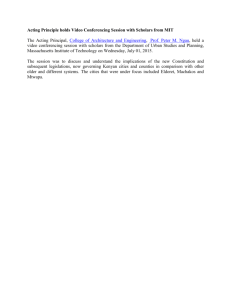Class of 2018 Ventures to Milano, Italy
advertisement
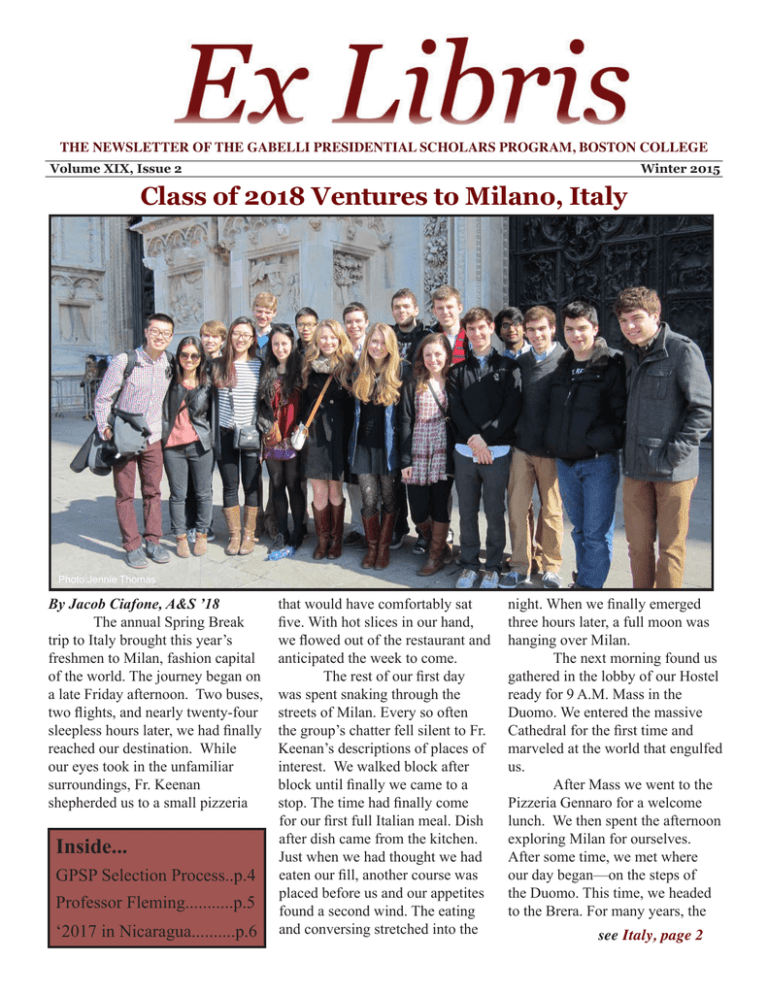
THE NEWSLETTER OF THE GABELLI PRESIDENTIAL SCHOLARS PROGRAM, BOSTON COLLEGE Winter 2015 Volume XIX, Issue 2 Class of 2018 Ventures to Milano, Italy Photo:Jennie Thomas By Jacob Ciafone, A&S ’18 The annual Spring Break trip to Italy brought this year’s freshmen to Milan, fashion capital of the world. The journey began on a late Friday afternoon. Two buses, two flights, and nearly twenty-four sleepless hours later, we had finally reached our destination. While our eyes took in the unfamiliar surroundings, Fr. Keenan shepherded us to a small pizzeria Inside... GPSP Selection Process..p.4 Professor Fleming...........p.5 ‘2017 in Nicaragua..........p.6 that would have comfortably sat five. With hot slices in our hand, we flowed out of the restaurant and anticipated the week to come. The rest of our first day was spent snaking through the streets of Milan. Every so often the group’s chatter fell silent to Fr. Keenan’s descriptions of places of interest. We walked block after block until finally we came to a stop. The time had finally come for our first full Italian meal. Dish after dish came from the kitchen. Just when we had thought we had eaten our fill, another course was placed before us and our appetites found a second wind. The eating and conversing stretched into the night. When we finally emerged three hours later, a full moon was hanging over Milan. The next morning found us gathered in the lobby of our Hostel ready for 9 A.M. Mass in the Duomo. We entered the massive Cathedral for the first time and marveled at the world that engulfed us. After Mass we went to the Pizzeria Gennaro for a welcome lunch. We then spent the afternoon exploring Milan for ourselves. After some time, we met where our day began—on the steps of the Duomo. This time, we headed to the Brera. For many years, the see Italy, page 2 Italy con’t from page 1 Brera served as a Jesuit school for Milanese youth. When Napoleon took control of Lombardy, however, the school was seized and eventually turned into an art gallery. When we entered, we took out time to take in the cultural history around us. Caravaggio, Mantegna, and Hayez, among many others, were represented. Monday promised to bring us out to a more distant corner of the city. Amongst commuters and students, we took our places in a subway car, counting down the remaining stops to our destination. After a switch of trains, we exited and walked to one of the most important spiritual centers of Milan. The Basilica of St. Ambrose was, as its name suggests, the home church of the patron saint of Milan, St. Ambrose. He had a massive impact on the development of Christianity. Currently, his church houses beautiful mosaics and paintings. Behind the high altar, visitors can even see the resting place of the famous saint. As we walked back from the church to the center of the city, we transported from the spiritual to the artful. This next event would bring us through the so-called Quadrilateral, the home of Milanese high fashion. Our walk through the blocks of this district showed us modern fashion’s avant-garde. The plan for the next day had us onboard a regional train headed to a charter house community; these religious centers are much like monasteries, but resident monks live in small houses completely isolated from one another despite their Photo:Jennie Thomas Photo:Jennie Thomas Photo:Jennie Thomas 2 proximity. The church around which the community Certosa di Pavia is centered stood out even in the long list of beautiful churches that we saw. It united our favorite things of each of them into one building. It is large, but not pompously so. Its paintings and statues flow into one another without being overwhelming or pretentious. We even found admittance into the cloisters behind the church building. Though most of us doubted our ability to live our lives in solitude, the entire experience was quite moving. So far our time had been spent in the flat plains around Milan. In the distance though, we could always see impressive mountains. Finally, we took a train ride north into the foothills of the Alps. Leaving the metropolis behind us, we entered a peaceful, verdant world. Lake Como has a reputation for beauty, and we were not disappointed. Picturesque buildings on twisting narrow streets sit at the bases of steep cliffs. We took the majority of the day exploring without any given destination, stopping for lunch at a local restaurant. As a relaxing day of pictures and window-shopping drew to a close, we assembled on a dock to await a ferry. We were scarcely the only ones. A large group of Italian students was also on the dock. Group inched closer to group. Whatever the spark was, we’ll probably never know, but in a flash some fifteen Italians had surrounded a group of our own. The energy was positively high, despite our initial inability to communicate. After a few attempts to speak in Spanish by several of our number, Austin Photo:Jennie Thomas Bodetti, the group’s only Italian speaking student, came over and tried to make sense of the matter. It turned out the Italian students were Southerners who had come north for vacation. After a few more minutes of high-energy conversation, we rushed to board the ferry that took us to the train back to Milan. Our last day dawned. The trip had gone by right before our eyes. We ventured into central Milan one last time. Warm sun and strong wind buoyed our spirits as we made our way to the Castello Sforzesco. Once a defensive bulwark of the city, the fortress now houses art. The most famous piece is Michelangelo’s unfinished Pieta. Though rough, the statue offers a different look at one of the most tender moments in Christian artistic representation. “After the museum, we returned once more to the Duomo to climb to the roof.The endless stairs spiraled up and up into a tunnel of marble. We emerged into a forest of statues, buttresses, and detailed craftsmanship that is hard to describe with words. From the roof we had a breathtaking view of the city that we had been exploring over the past week. 3 Photo:Jennie Thomas “This, our last organized activity ended with a class of Presidential Scholars lying hand in hand atop the fourth largest cathedral in the world.” After we descended, we had several hours of free time to see the city one last time. Dinner brought us once more to a common table. A wonderful experience was finally coming to a close. We said our thanks to Jennie and Fr. Keenan, two people who through tireless work made the trip flow seamlessly for all of us involved. We left the restaurant closer than ever, and went to bed one last time in Milan. Selection Weekend: Fifty-five of Nation’s Best, Brightest High School Seniors Arrive on Campus Photo: Isra Hussain By Ali Mills, A&S ’18 Every year, the Gabelli Presidential Scholars Program (GPSP) invites a selection of outstanding applicants from the Early Action pool to Boston College for four days of interviews, seminars, and socializing. At the end of these four days the program selects a new class of Presidential Scholars. This year, on a snowy Wednesday in late January, fifty-five high school seniors from around the world arrived at Boston College to learn about the GPSP. This year’s prospective scholars were more diverse and more accomplished than ever before. They represented twenty-six states and four countries and demonstrated the best of the applicant pool in science, business, the arts, and an array of other disciplines. Upon arrival, each prospective student was matched with a current scholar who would act as his or her host during the fourday selection process. That night, current and potential scholars had the opportunity to socialize and get to know one another over cupcakes at Lawrence House. Over the next two days, prospective scholars had the opportunity to learn more about 4 GPSP while those in the program got to know the “prospies” as well. In their free time, many chose to visit classes they were interested in, have lunch with current BC students, and learn about Undergraduate Research Opportunities. Between Thursday and Friday, all scholars were involved in interviews and seminars. Prospective students had the opportunity to have conversations with faculty in their chosen major as well as the admission staff. They also participated in a mock see Selection Weekend, page 5 Selection Weekend con’t from page 4 seminar, which allowed them to show their talents in a classroom setting. For the second year, the visiting students also participated in a group conversation. Father Keenan reflected that the group conversation allowed students to show a side of their personality that otherwise might have gone unrepresented. On Thursday night, the visiting students attended a formal dinner with current and past Scholars along with various members of the faculty. Mary Rose Fissinger A&S ’15 interviewed program alum, Matthew Hamilton. Hamilton graduated from the College of Arts and Sciences in 2009 with a degree in theology. After graduation, he worked in Jordan as a writer and a volunteer with the Society of Jesus. He told the crowd that now, having been out of college for six years, he realizes that the Program “was the gift of freedom.” Thanks to the scholarship, he was able to pursue passions without worrying about being saddled by debt. He also credits the Program with providing him a support system and an intimate community on campus. Looking back, Hamilton remembered his “Prospie Weekend” as one of the major turning points in his life. It was during this weekend that he was first encouraged to challenge the parameters on his life and to want to make a difference. Finally, on Friday night, after an exhausting and exhilarating three days at Boston College, the prospective scholars were treated to dinner at Uno’s Chicago Grill in Boston. Dinner was followed by the show “Motown” and an ice cream social back on campus. The Program said goodbye to the fifty-five prospective scholars over brunch on Saturday morning. The selection process had already begun to spark great conversation, friendships and intellectual curiosity after only four days. Current Scholars are looking forward to welcoming a new class of Presidential Scholars in the fall. Make No Bones About It: Professor Robin Fleming Speaks to Scholars By Marie Pellissier, A&S’15 On Tuesday, February 3rd, Professor Robin Fleming braved one of the coldest nights of the year to come speak to Scholars. Professor Fleming, BC’s first MacArthur fellow and former history chair, recently published Britain After Rome: The Fall and Rise, 400-1070. Her book, like the talk she gave, uses objects as windows into periods of history from which we have very little written evidence. Professor Fleming’s talk introduced the Scholars to the idea of an historian who works with material culture—the physical remnants of the past—as well as with documents. Her work has focused largely on Britain after the fall of the Roman Empire, but her talk ranged more broadly than that. Using material evidence from gravesites, she presented an argument about how “AngloSaxon” can be a misleading term to use to describe the inhabitants of the British Isles in the seventh and eighth centuries. Using isotopic analysis of the bones from graves, as well as the material evidence remaining, such as jewelry, pottery, and other grave goods, she argued that migration was a far more common occurrence in post-Roman Europe—particularly post-Roman 5 Britain—than previously thought. The Scholars greatly enjoyed Professor Fleming’s talk, and it provided an interesting look into interdisciplinary studies. Professor Fleming’s work is historical, but she depends on biology and osteoarchaeology, the identification, analysis and interpretation of osseous materials recovered during archaeological excavations, for much of her data. For many Scholars, this was a fascinating demonstration of the possibilities of interdisciplinary cooperation, and a chance to meet a great professor. Class of 2017 Embraces Social Justice in Nicaragua Photo Courtesy of: Isra Hussain By Matthew Perryman A&S’17 Gabelli Presidential Scholar Program Class of 2017 spent an action-packed five days in Nicaragua visiting a wide range of organizations and meeting an even wider range of people all united in one quest: to change Nicaragua for the better. Selflessness radiated from such figures as Fernando Cardenal S.J., the only Jesuit reinstated to the Order, and Tio Antonio, the proud owner of the Cafe de las Sonrisas. There was a certain spiritual charge to the trip felt by the religious and nonreligious alike; Fr. Cardenal’s story was a homily directed to mankind as a whole, not only those of a specific faith. Fr. Cardenal famously led the National Literacy Campaign and played an important part in the Sandinista Revolution. He felt strongly about his involvement with this movement because of its Father Fernando Cardenal: Jesuit Priest, former Minister of Education during the Sandinista Revolution, Coordinator of the National Literacy Campaign greater focus on the welfare of all Nicaraguans. The Jesuits, however, were unhappy with the violent side of the revolution—its goal was to overthrow the unpopular Samosa regime. Fr. Cardenal recounted his overarching life story, emphasizing the important parts with poignant and powerful anecdotes. A courageous selflessness pervaded all aspects of his life; he had a certain confidence in his experience with humanity that empowered him to become entangled in the Sandinista Revolution despite the Jesuits’ disapproval and the immense danger. Fr. Cardenal’s religion was certainly important in his decision, but he still valued his sense of justice over his position in the church. This theme of valuing the good of the underprivileged above all else was present throughout trip and a reason for hope in Nicaragua. 6 Tio Antonio had a vision to remedy the dignity of the deaf. He felt injustice in the particular difficulties that the deaf had to confront in their job search and had an idea for how to target this struggle and create capabilities. Thus, Cafe de las Sonrisas was born, a small restaurant and hammock workshop in Granada that provides the deaf with career opportunities. Antonio emphasized that providing people with jobs is more important than any sort of charity; while charity demeans the value of persons, employment shows them their significance. Although there was no strict religious association with Antonio beside some brief allusions to God, I felt the same sense of spiritual selflessness in him that Fr. Cardenal exemplified. They both see Nicaragua, page 7 NICARAGUA Nicaragua, con’t from page 6 emanated a wonderful happiness that was almost innocent; they had hope that their visions for Nicaragua would one day be realized and have dedicated their lives to this actualization. Nevertheless, they understood the reality of the situation, recognizing the ongoing struggle of promoting justice in the second-poorest country in the western hemisphere. As a sophomore scholar, I think I can speak for all when I say that the trip was important for our ongoing conversation about issues of social justice. The Summer Service Learning Program experience last year allowed us to work under local leaders in the struggle for social justice in Boston. The Nicaragua experience took us a step further by promoting social justice on the international scale, providing the class with a more global perspective. We no longer worked beneath leaders to promote justice but spoke with them almost as equals, trying to glean what we could from their experience so we could apply it. Now we must bring this experience back and use it to lead our own social justice project. Photo: Isra Hussain Above: Hagop ’17 during a visit to Café Sonrisas, owned by Tío Antonio: It is one of the first cafeterias in the Americas and the 4th in the world integrated fully by workers with different capacities (particularly deaf people). It’s a project that trains people with disability and provides diverse work opportunities, including hammock making. Below: The class visited La Corriente Feminista and spoke with Maria Teresa Blandon. the founder of the Feminist Movement and extended women’s movement, Founder of the Association of Rural Workers Photo Courtesy Of: Vivian Chang Photo: Isra Hussain 7

